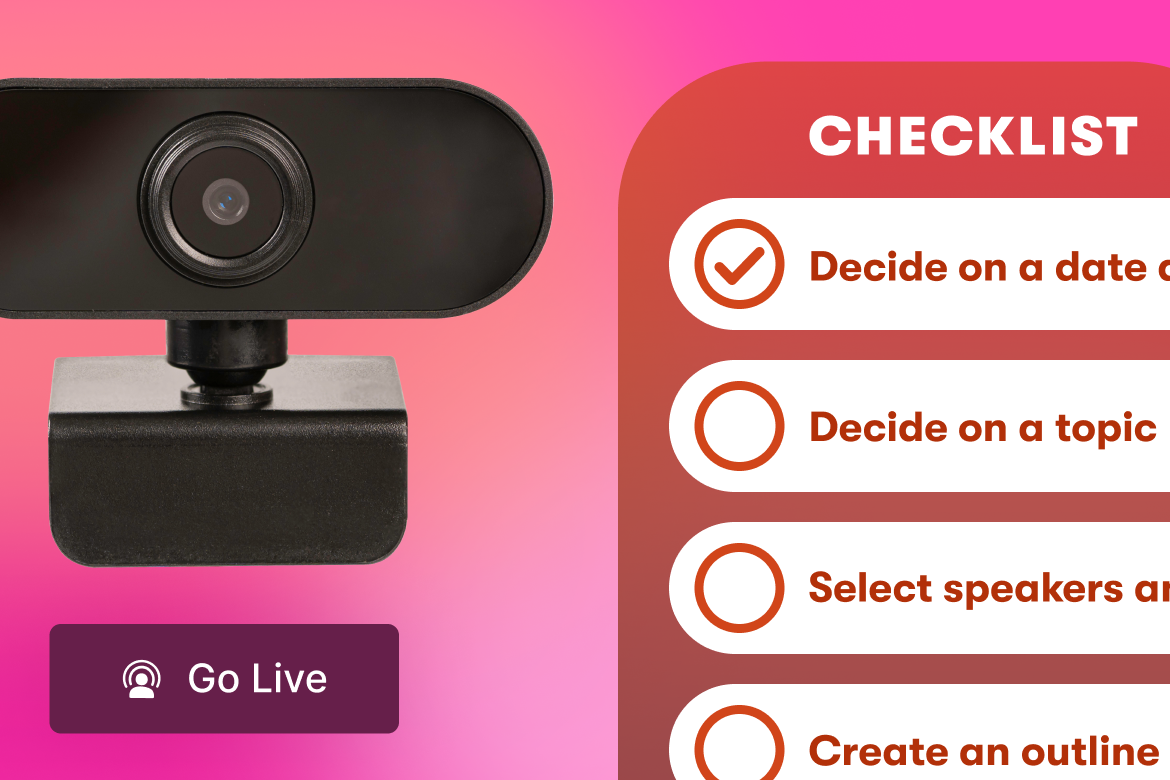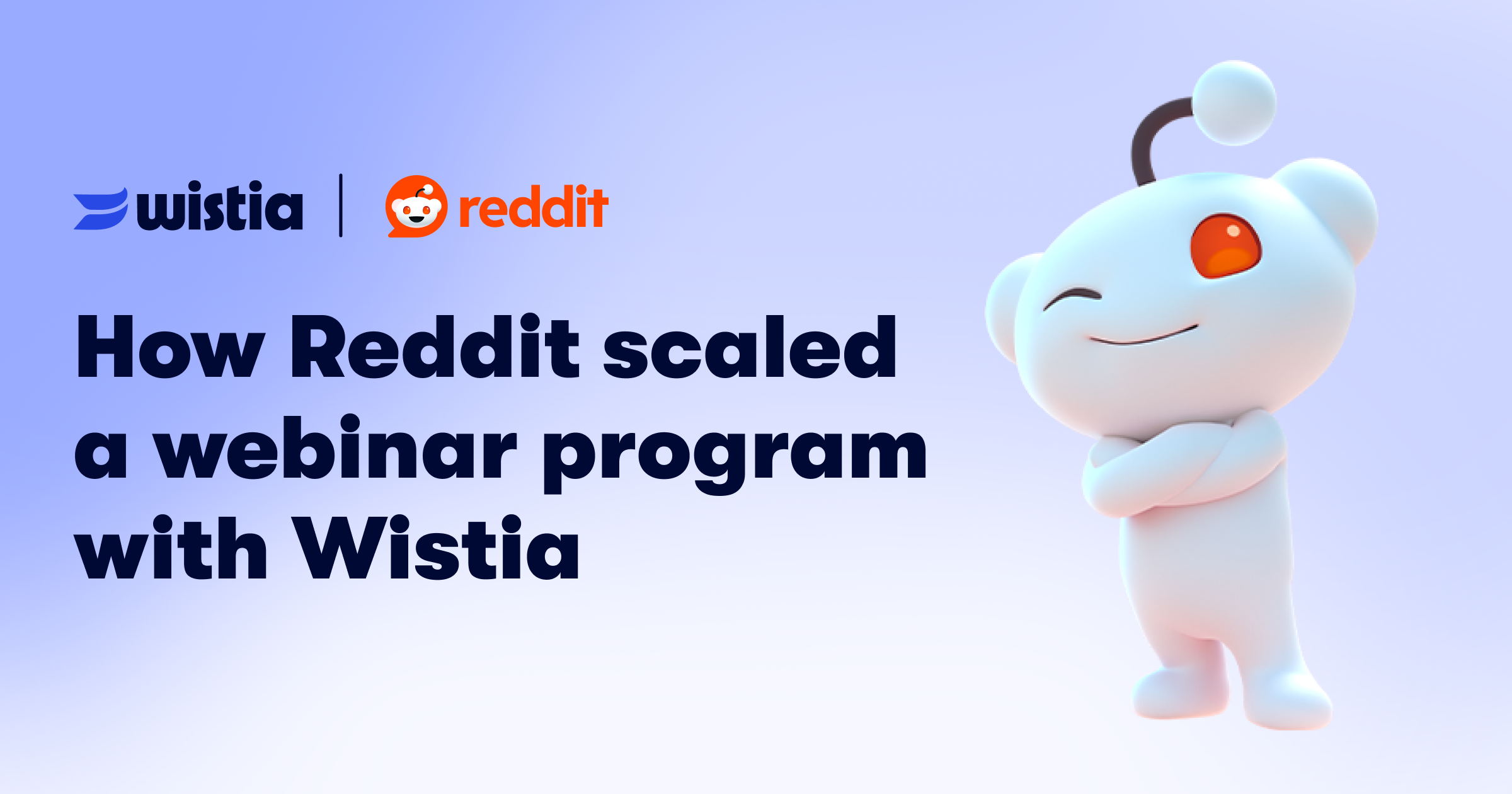Top 7 Insights from Wistia’s State of Video Report
We analyzed millions of videos across thousands of companies to understand what types of videos resonate with consumers and the challenges businesses face when creating them. And we put all of the insights, data, and benchmarks into our State of Video Report. Here are the top insights.
June 16, 2025
Topic tags

Video isn’t the future anymore. It’s here, and it’s growing fast. To help you stay ahead, we uncovered key video trends, opportunities, and benchmarks in our latest State of Video Report. Here are seven insights that reveal the state of video today and where it’s going next:
- Video production is ramping up (and going in-house)
- Viewers have higher standards for short-form videos
- More professionals are using AI to create videos
- Dubbing will be a game-changer for brands with an international audience
- Webinars keep giving long after they end
- More companies may start embedding videos on their own sites
- Interactive video features drive conversions when placed correctly
1. Video production is ramping up (and going in-house)
“Video is no longer just a part of the strategy. It is the strategy.”Piotr Smietana, Superside’s Director of Brand and Marketing Creative
To meet the growing demand for video, companies are making more videos and boosting their video budgets this year.
They’re also reshaping how their internal teams work with video. To support a video-first strategy and keep production fast and flexible, they’re hiring dedicated video producers and giving their marketing teams the responsibility to create videos in-house. Over 40% of companies create at least one video per week. Almost 60% of companies are increasing their video budgets this year. 71% of companies handle video production in-house, up from 63% last year.
2. Viewers have higher standards for short-form videos
2024 saw the biggest drop in video engagement in the last four years. Short videos took the hardest hit, with engagement down about 10% from the previous year. In comparison, videos over 30 minutes only dipped by 3%. It’s tough to pinpoint why this is happening, but it’s probably not shorter attention spans because long-form videos are still holding strong. More likely, viewers are so overloaded with short-form content on social media that they expect creators to get to the point even faster.
“If you don’t hook viewers in five seconds, they’re gone. Get straight into the action to make those first moments count.”Henry Ceiro, Dropbox’s Video Content Producer
In 2024, overall video engagement rates dropped by 7% — the largest dip in four years. Short-form videos (3–5 minutes) saw a 10% drop in engagement over the past year. Engagement for videos longer than 30 minutes dipped by just 3%, which shows that valuable content still holds attention.
3. More professionals are using AI to create videos
Over half of professionals are expected to use AI in their video workflows by the end of the year.
Right now, we’re seeing AI most often used in pre-production, especially for scripting. On the post-production side, it’s common to use AI to generate captions, dubs, and social clips to make videos more accessible and ready for multiple social platforms. That said, we’re not at the point where you can type a prompt and walk away with a fully polished video. At Wistia, we put this to the test by producing an ad entirely with AI. The result? It still took a human touch to pull it all together. Check out the full breakdown of how we made it happen.
“AI is a creative multiplier. It speeds things up, but you still need real creative talent at the helm.”Piotr Smietana, Superside’s Director of Brand and Marketing Creative
41% of professionals are using AI to create videos — up from just 18% last year — and 19% plan to start soon. Among professionals using AI, 43% use it to write scripts and 42% to edit videos. AI-generated captions have doubled in use for the second year in a row.
4. Dubbing will be a game-changer for brands with an international audience
Dubbing is the second most exciting AI skill for professionals right now, and it’s easy to see why. Recent advances in generative AI for audio make it possible to dub your videos in multiple languages — and have them sound natural — in just a few clicks.
Not long ago, dubbing meant hiring translators and voice actors, which made it expensive and time-consuming. And while AI dubbing tools have been around for a while, the voices often landed in the uncanny valley: robotic, stiff, and not exactly audience-friendly. But that’s changing fast. Generative AI now delivers more realistic, fluent speech that’s much closer to the real thing.
5. Webinars have been around since the late 90s, but their value keeps growing.
While marketers primarily host webinars to generate leads and engage with customers, they’re starting to tap into the long-term potential of their events. Now, nearly all marketers running webinars are repurposing their recordings into assets to grow their content library and feed their social channels. Some are using AI to pull the best clips from their recordings for social, while others feed transcripts into tools like ChatGPT to draft blog posts or article outlines.
Nearly half of companies host webinars at least once a month. 89% of marketers repurpose webinar content for blogs, social clips, and email campaigns. On-demand webinar views usually keep rolling in for three to four months after the live event.
6. More companies may start embedding videos on their own sites
Right now, most companies aren’t putting videos on their own websites. Instead, they share their videos on social, upload them to YouTube, or send them through email or internal channels. But that might change soon. As more professionals create and repurpose video content, companies could start embedding videos across their sites, from blog posts to product pages to support docs.
If that happens, there’s real potential to turn viewers into leads. Some video platforms offer built-in interactive features (like calls to action [CTAs], lead generation forms, and annotation links) and accessibility features (like AI-powered dubbing in other languages). It wouldn’t be surprising to see those features grow in popularity as more videos start showing up on company sites.
7. Interactive video features can convert a lot of viewers when placed correctly
Not every marketer adds CTAs, lead gen forms, annotation links, and other interactive features to their videos, but those who do are seeing real results. You can convert as many as two-thirds of viewers into leads with an interactive feature, but it depends on several factors: which feature you use, how long your video is, and when the feature appears in the video.
Take lead gen forms, for example. On average, about a quarter of viewers fill them out. But put one at the end of a 60-minute video, and completion rates jump to 65%. About one in four viewers will fill out a lead gen form in a video.
Well-placed CTAs can boost video conversion rates to as high as 40%. CTAs placed in the beginning of shorter videos (under five minutes) perform well, while CTAs in longer videos (over five minutes) do better when placed in the middle.






